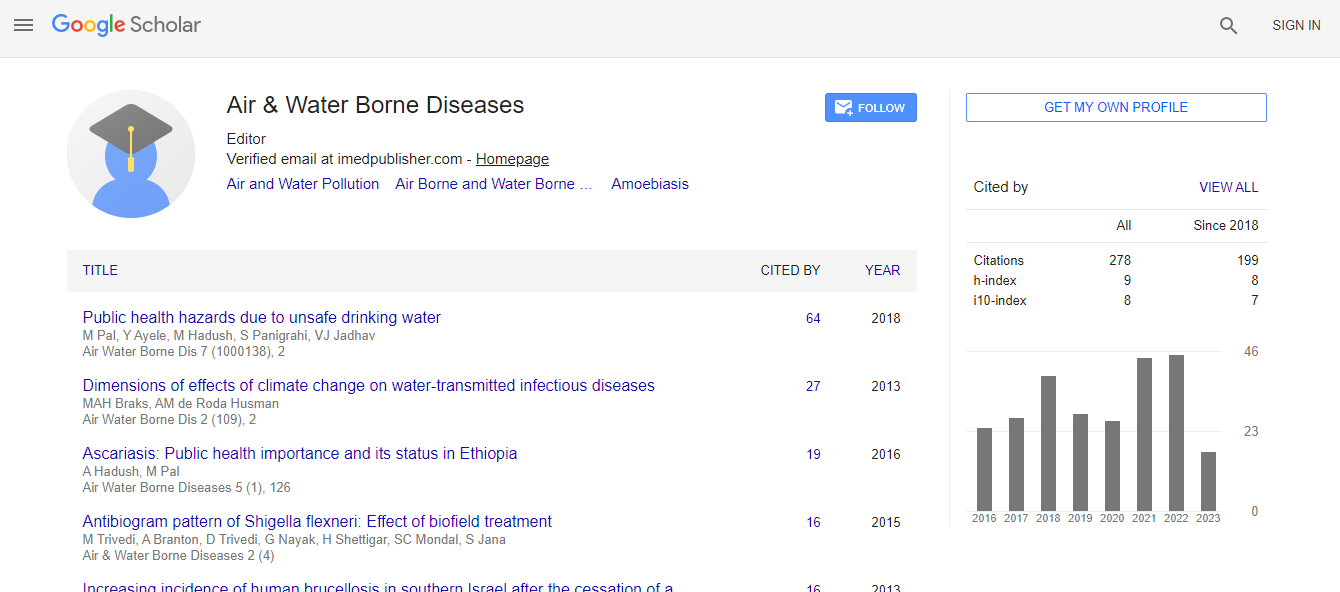Research Article
Bacterial Contamination of Indoor Air in Schools of Riyadh, Saudi Arabia
Samiah HS Al-Mijalli*Biology Department, Princess Norah Bent Abdul Rahman University, Scientific Section, Riyadh, Saudi Arabia
- *Corresponding Author:
- Dr. Samiah HS Al-Mijalli
Biology Department, Princess Norah Bent Abdul Rahman University
Scientific Section, Riyadh, Saudi Arabia
Tel: +00966555200510
E-mail: dr.samiah10@hotmail.com
Received date: October 30, 2016; Accepted date: November 03, 2016; Published date: November 10, 2016
Citation:Al-Mijalli SHS (2016) Bacterial Contamination of Indoor Air in Schools of Riyadh, Saudi Arabia. Air Water Borne Dis 5:131. doi: 10.4172/2167-7719.1000131
Copyright: © 2016 Al-Mijalli SHS. This is an open-access article distributed under the terms of the Creative Commons Attribution License, which permits unrestricted use, distribution, and reproduction in any medium, provided the original author and source are credited.
Abstract
Background: The presence of bacteria in the indoor air pose a serious problem from the point of view of health protection and environmental engineering. Precise determination of various groups of bacteria indoors is necessary for both to estimate the health hazard and to create standards for indoor air quality control. This is especially important in such densely populated facilities like educational institutions. Results: In the present study, 252 samples of indoor air and air conditioners of 25 schools (Middle Schools) Public and Special, those were collected from east and centre of Riyadh in, Saudi Arabia, between October and November 2015. The most common bacterial isolates were, Gram negative bacteria (Pseudomonas stutzeri, Francisella tularensis and Ralstonia mannitolilytica ) of the total airborne bacteria. Whereas, the prevailing Gram positive bacteria were the Staphylococcus aureus, followed by Kocuria kristinae. Also, Pseudomonas stutzeri was isolated from the air conditioners of special schools. Results revealed that the highest level of bacterial contamination was detected in the class rooms during lessons. Conclusions: High concentrations of bacteria was observed in the public schools (where overcrowded classrooms). Results obtained in this study showed that the bacterial species varied in their susceptibility to all the antimicrobials used. Majority of them showed resistance to one or more of antimicrobials compounds. It was observed that Ciprofloxacin was the most effective antibiotic to all bacterial species used during this study.

 Spanish
Spanish  Chinese
Chinese  Russian
Russian  German
German  French
French  Japanese
Japanese  Portuguese
Portuguese  Hindi
Hindi 